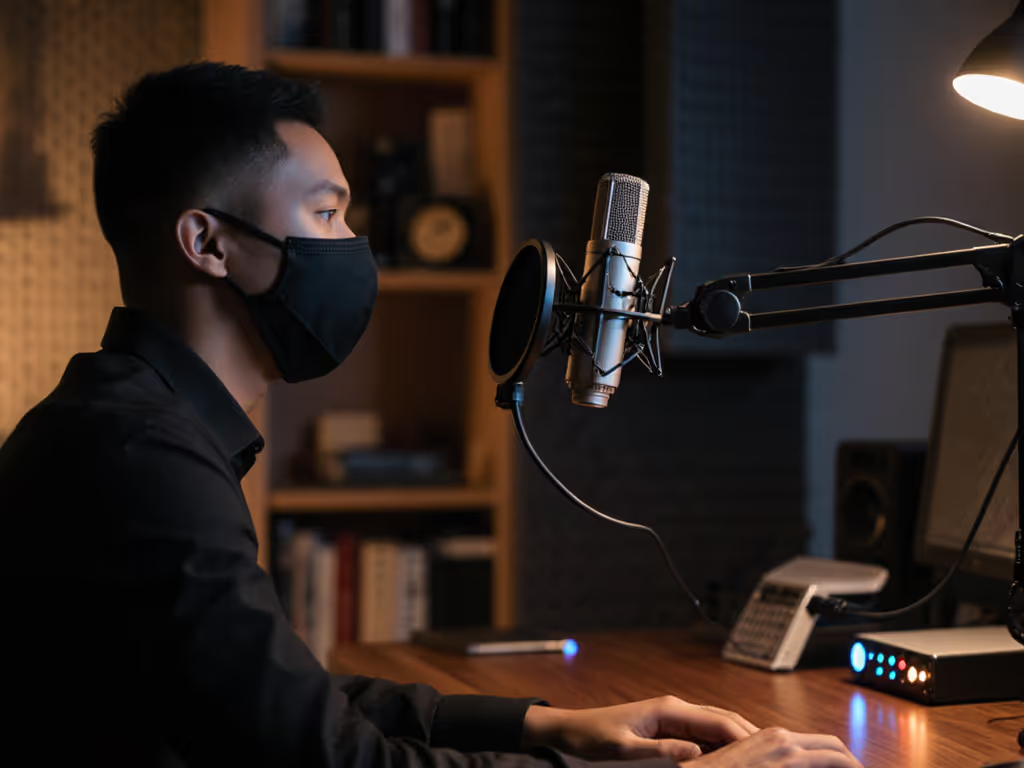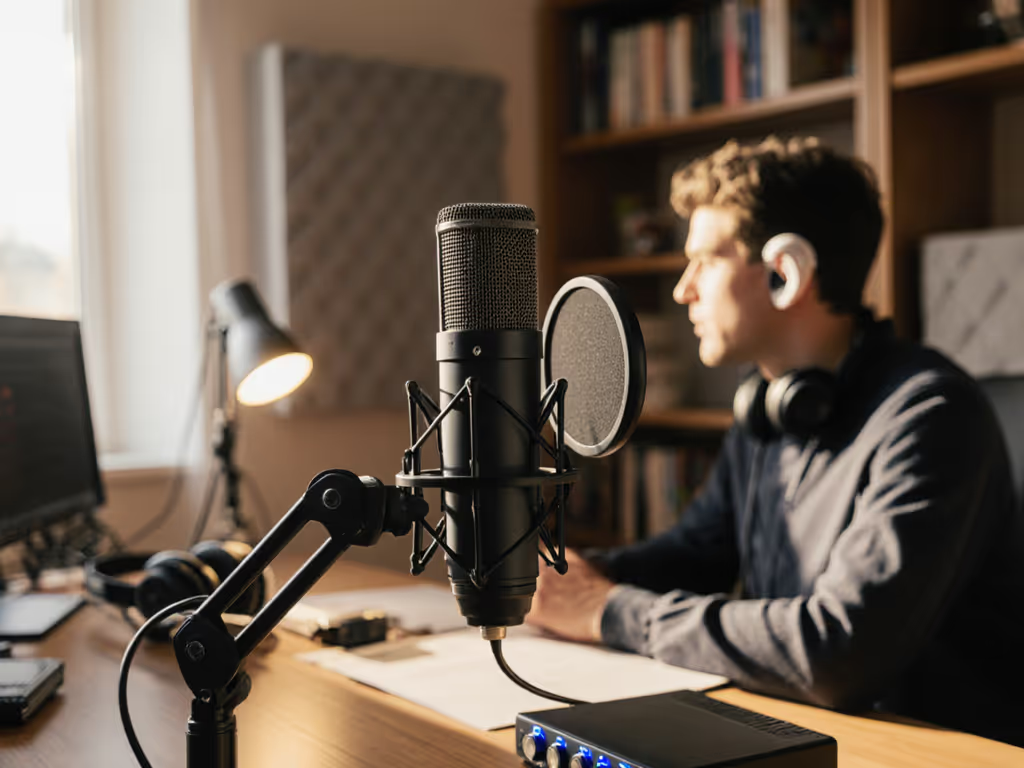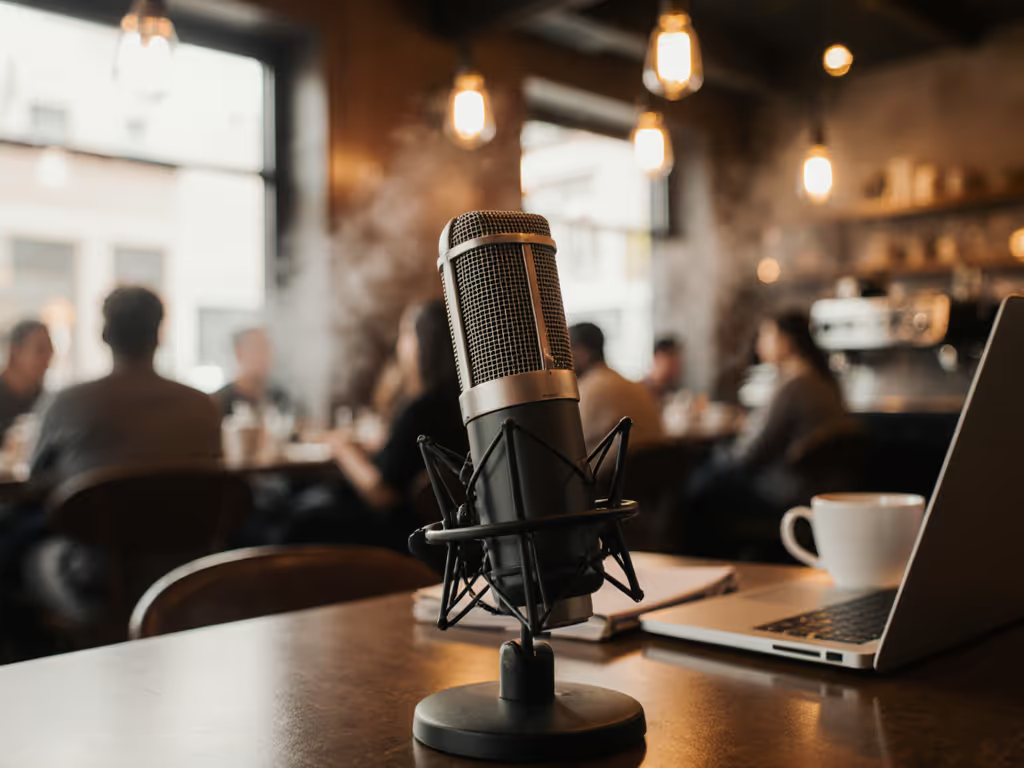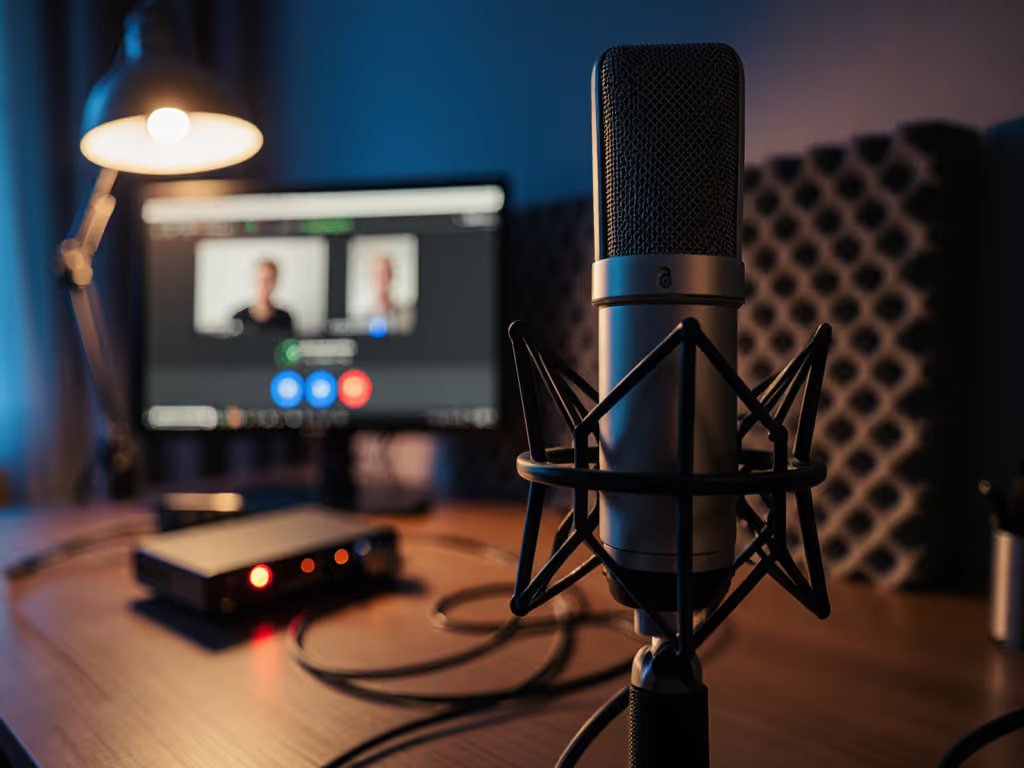
How Mic Frequency Response Shapes Your Vocal Tone
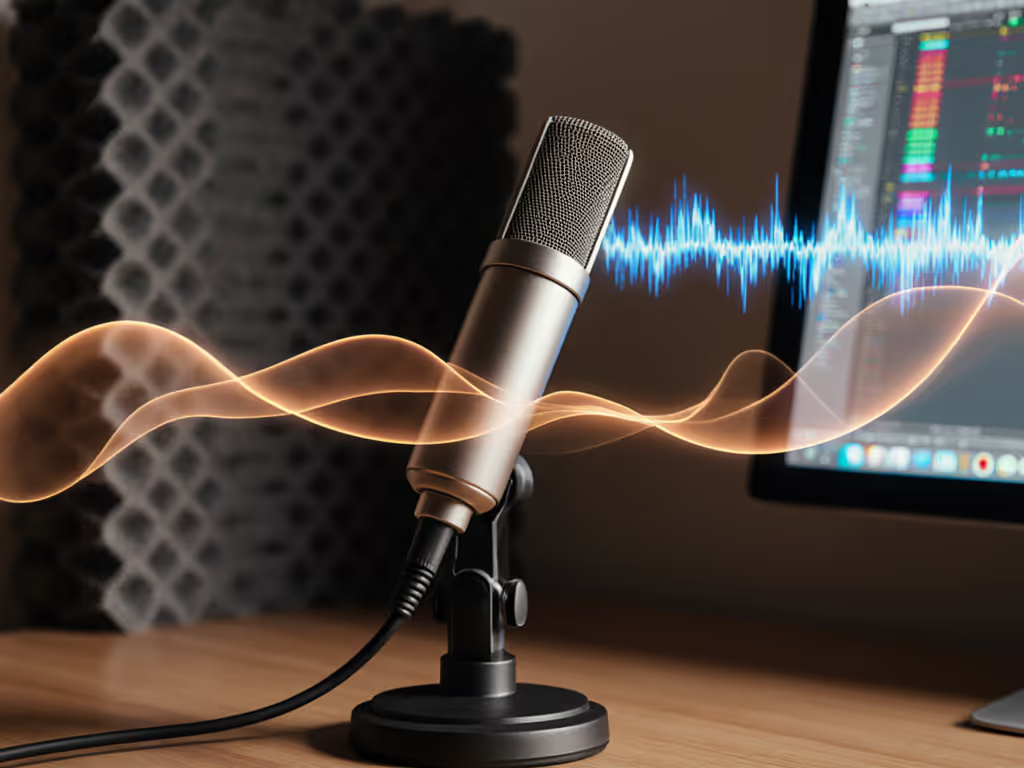
Your microphone's mic frequency response is the silent architect of vocal credibility. It determines whether your voice lands as authoritative or amateurish (before a single plugin touches the track). For podcasters recording in untreated bedrooms or noisy co-working spaces, this spec isn't academic; it is the difference between sponsor-ready clarity and hours of corrective surgery. Understanding vocal frequency range realities (85-255 Hz for fundamentals, 2-5 kHz for intelligibility) lets you match transducers to actual pain points, not marketing hype. Let's dissect how frequency curves solve (or create) problems in real rooms.
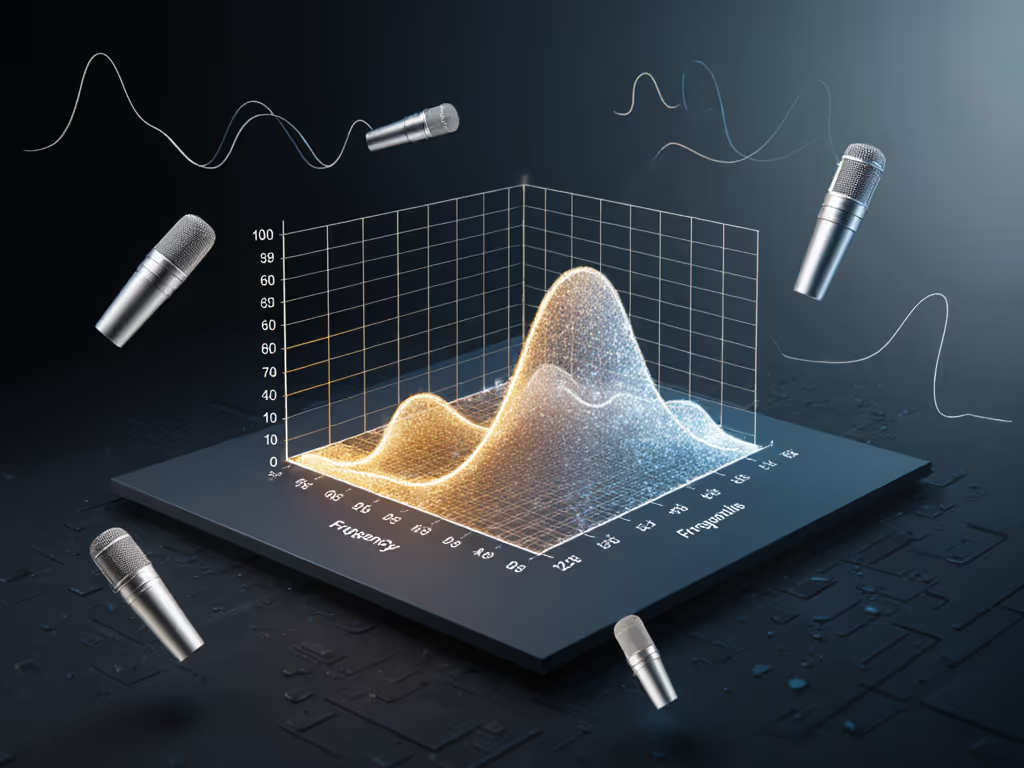
Why Frequency Response Trumps Flatness in Imperfect Rooms
Most creators obsess over "flat response" mics, assuming neutrality means accuracy. But microphone sound profile curves reveal far more about real-world performance. A flat response (like the Audio-Technica AT2020) reproduces all frequencies equally, ideal for pristine studios. In untreated rooms? It captures everything: HVAC rumbles, keyboard clacks, and the hollow resonance of drywall. Worse, it offers zero compensation for common vocal flaws like nasality (around 1.2 kHz) or boomy proximity effect.
Tailored responses solve specific problems:
- Presence boosts (3-5 kHz) combat muffled delivery in small rooms
- Low-end roll-offs (<= 200 Hz) neutralize proximity bass when leaning in
- High-frequency attenuation (>= 12 kHz) reduces harsh sibilance without de-essing
Take the Shure SM7B, a dynamic with a deliberate 200 Hz bass cut and 5 kHz presence lift. In practice, this means no low-end mud when hosts naturally drift closer to the mic, and consonants ('t', 'k') cut through background noise. It's not "neutral"; it is engineered for fixable problems. Pair it with clean preamp headroom (60+ dB gain), and you're capturing broadcast-ready audio in a closet studio. The trade-off? Limited high-end air, but that's preferable to post-processable sibilance over unfixable room boom.
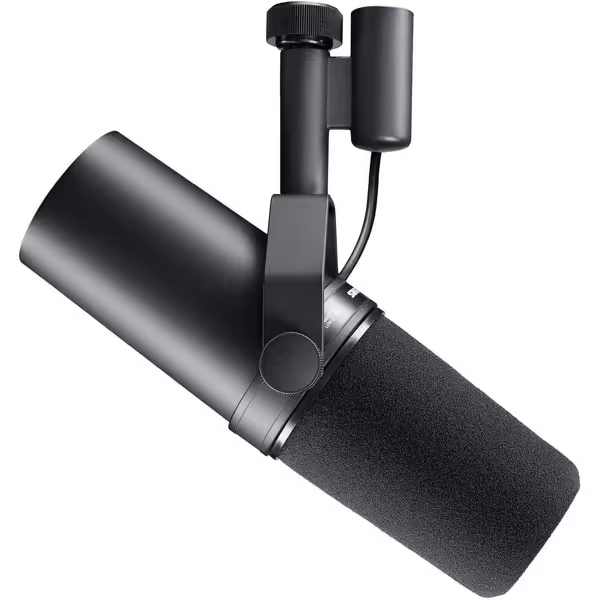
Shure SM7B Microphone
Off-Axis Rejection: Your Secret Weapon Against Room Noise
Your frequency response chart must include off-axis behavior. Directional mics (cardioid, supercardioid) reject sound from the sides/rear, but how cleanly? Cheap mics develop harsh, uneven coloration off-axis (e.g., exaggerated 800 Hz peaks), making room noise more noticeable. This is fatal in multi-host panels where chairs squeak or co-hosts shift positions.
Critical off-axis traits for noisy rooms:
- Consistent low-end attenuation away from the axis (blocks HVAC rumble)
- Smooth high-frequency roll-off (prevents "swishy" keyboard noise)
- Minimal phase cancellation artifacts (avoids "hollow" room reflections)
I recently debugged a national podcast where hosts sounded "muddy" despite using "pro" mics. The culprit? Their mics' off-axis response exaggerated chair squeaks at 1.5 kHz (exactly where voice clarity lives). We swapped to hypercardioids with tighter off-axis nulls and added gobos. Suddenly, "s" sounds snapped into focus without de-essing. Off-axis rejection isn't about silencing the room, it's about silencing specific frequencies that compete with speech.
Matching Response Curves to Your Voice (Not the Demo)
Spec sheets lie by omission. A mic's frequency graph assumes anechoic conditions and perfect placement (impossible in homes). Your voice's unique resonances interact with the mic's curve in ways manufacturers won't admit. Here's how to diagnose mismatches:
| Symptom | Likely Frequency Culprit | Corrective Action |
|---|---|---|
| "Thin" or "nasal" tone | 1.2-1.8 kHz peak | Avoid mics with presence boosts in this range |
| Boomy bass on breaths | 80-150 Hz buildup | Prioritize mics with 150 Hz low-cut switches |
| Harsh "s" sounds | 5-8 kHz spike | Choose mics with high-frequency attenuation |
A creator with a deep voice (fundamentals below 100 Hz) will struggle with flat-response condensers. Without ultra-low self-noise (<10 dB), the mic requires excessive gain, amplifying computer fans. Instead, a dynamic like the SM7B sacrifices high-end extension for lower noise floor and built-in bass control. Your voice's fundamental frequency isn't the target; it's the problem zones where room noise and vocal flaws overlap.
The Podcast Vocal EQ Myth (And What Really Works)
New creators chase podcast vocal EQ "presets" to fix muddy recordings. But if your mic's response curve already emphasizes room reverb (e.g., 250 Hz peak) or exaggerated sibilance, no EQ saves you. You're just amplifying noise while carving out words.
Clean capture beats corrective processing. Choose transducers that create fixable, not fatal, problems.
In untreated rooms, prioritize:
- Mic placement discipline: 6-8 inches from mouth, slightly off-axis to reduce plosives
- Targeted response curves: Low-cut switches for proximity control, presence boosts only if your voice lacks clarity
- Preamp headroom: Enough clean gain to keep noise floor below -60 dBFS
When recording a documentary team in a warehouse, we used mics with 180 Hz high-pass filters and flat off-axis response. Result? Zero post-EQ for voice clarity. The raw tracks had consistent tone whether hosts stood or sat, because the mic's response curve handled the room, not the DAW.
Final Truth: Frequency Response Is Your First (and Best) Plugin
Forget chasing "studio magic" in post. In home studios, mic frequency response is your foundational processing stage. A tailored curve, like the SM7B's bass roll-off or the RØDE NT1's smooth top-end, gives you broadcast-ready audio before the interface. This isn't about perfection; it's about making problems manageable.
For quick wins tomorrow:
- If your room has low-frequency noise (HVAC, traffic), choose mics with switchable 150-200 Hz high-pass filters
- If sibilance ruins takes, avoid mics with peaks above 4 kHz (check off-axis charts!)
- Always test mics with your voice at your normal distance, proximity effect varies wildly by mic type
I've seen national clients waste $2k on condensers only to discover their untreated room amplified every flaw. Capture clean, commit early, and save editing time for strategic sweetening, not damage control. Your voice's credibility starts the moment it hits the diaphragm. Choose wisely.

